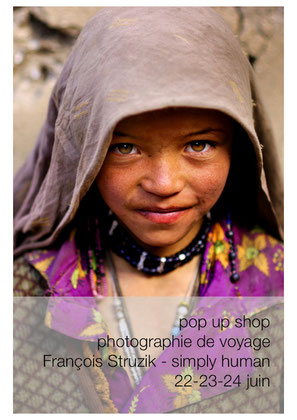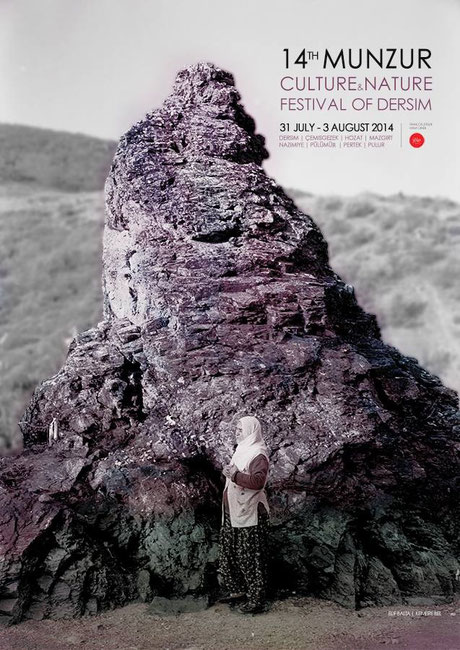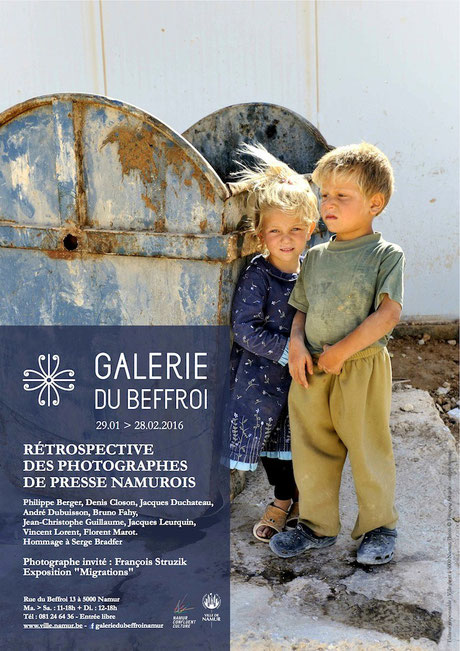
Propos Photos
de l'atelier Le + Simple Appareil
Quai 22, Namur (Belgium)
31.01.25
L’atelier photographique « Le Plus Simple Appareil » invite François Struzik pour une projection commentée de ses images.
Il a toujours travaillé sur des questions de société (droits des femmes, droits des enfants, accès à la santé…) notamment pour des ONG et des Agences humanitaires. Il a témoigné en images des problématiques et du travail réalisé. Parallèlement, il s'engage dans des projets à (très) long terme sur des questions sociales (migrations, conditions de travail), religieuses et de genre. Il a notamment produit des séries de reportages sur les travailleurs portuaires, le soufisme, le chemin de croix de Jérusalem, les filles qui boxent…
L’approche documentaire qu'il privilégie se base sur l’engagement du photographe et sur une tentative d’appréhender le monde liant esthétique et réflexion sociale.
Quai 22, rue du séminaire 22 à Namur
31-01-25 à 20.00

Vu.e de dos
Images à contre-courant
Le Delta, Namur (Belgium)
25.09.20 - 03.01.21
Carlos Aires, Jane Evelyn Atwood, Charlotte Beaudry, Michael Borremans, Dirk Braeckman, Gilles Caron, John Coplans, Daniel Dezeuze, Sylvie Eyberg, Esther Hovers, Yves Lecomte, Adam McEwen, Bruce Nauman, Shirin Neshat, Simone Niquille, Ria Pacquée, Michelangelo Pistoletto, Simon Schubert, Trine Søndergaard, François Struzik, Freddy Tsimba.
While the figure seen from behind is a recurrent motif in the history of Western art, it has rarely been the object of any specific consideration. And yet the subject seems to be particularly topical given the ubiquitousness of media in contemporary society. Indeed, isn’t the anonymity implied in the back view a way of escaping from the mass phenomenon of self-exhibition caused by the intensive use of social media and, more specifically, by the daily production of millions of ‘selfies’ ? More so still, doesn’t this anonymity appear as a deliberate act of resistance against the countless surveillance devices (among others, facial recognition) that have spread across our cities in recent years, to the extent that they threaten our individual freedoms ? Choosing the back over the face, contemporary artists activate its subversive character and express current concerns with regard to the political issues at stake in the distribution of self-images or the monitoring of our presence in the public space. By reflecting the position of the viewers, the work immediately makes them aware of the eminently subjective nature of vision. The artists have explored this mise en abyme in a variety of ways. The back view can be a way of questioning painting itself (Charlotte Beaudry, Daniel Dezeuze, Adam McEwen), of highlighting the pitfalls of our relation to the mirror (Yves Lecomte, Michelangelo Pistoletto), of sounding out the mysteries of the image (Michaël Borremans, Dirk Braeckman, Sylvie Eyberg) or of embodying the nightmare of a society obsessed by its own reflection (Simon Schubert).
Exposing surveillance systems in order to better denounce the threat they pose (Bruce Nauman, Esther Hovers) and avoiding the mechanisms of facial recognition on activist grounds (Carlos Aires, Simone Niquille) are among the strategies adopted by the artists. Showing a figure from behind can also reflect an attitude of revolt and uprising that is the sign of dissimulated causes (Gilles Caron). The back represents this distancing with regard to the Other, out of a sense of modesty or in order to contextualize the relation of contempt. It gives an identity to these outcasts and society’s other invisible members : migrants (François Struzik, Freddy Tsimba), older women (Trine Søndergaard), prisoners (Jane Evelyn Atwood), or one’s own ageing body (John Coplans).
At times, the back symbolizes a detour taken to approach one’s own identity (Ria Pacquée) or the visible stigma of an impossible blend of genres (Shirin Neshat). Far from being an act of evasion, exposing the back can be read as a salutary reversal, a different way of occupying the world.
Isabelle de Longrée
Anaël Lejeune
Les passeurs du réel
journée autour du journalisme vivant
Quai 22, Namur (Belgium)
24 mars 2019
"L'image adolescente"
Strong and fragile.
Ghana, Ecuador, Palestine, Cambodia, Belgium... portraits of teenagers.


Travel Photography
Pop up shop
Encore Brussels gallery,
rue de Flandre, 91
June 22-23-24 2018

Filles, garçons, à égalité?
Equality between girls and boys… fact or fiction?
photo exhibition for Plan International Belgium
Maison des Cultures, Molenbeek (Belgium)
16.10.17 - 28.10.17
Voyage sacré - Sacred Journey
photo exhibition by François Struzik
Alliance française de Karachi (AfK) (Pakistan)
08.02.16 - 15.02.16

Migrations - François Struzik
12 pictures around migrations
invited photographer
Galerie du Beffroi - Namur (B)
29.01.16 - 28.02.16


"Migrants d'hier et d'aujourd'hui, expulsons nos préjugés"
"Migration today and before: enough with prejudices!"
Around migration with the photography of François Struzik - simply human
CRIC Charleroi (B) - 2016
CRIC: Centre Régional d'Intégration de Charleroi.
Université Ouverte de Charleroi - 2016
Centre Culturel La Villa Culture de Ganshoren - 2016
Maison de la Laïcité, Andenne - 2016


Festival of DERSIM (Turkey)
14th MUNZUR Culture & Nature

Migration and photography
La migration vue par la photographie, par le photographe François Struzik
Louvain-la-Neuve (B) 25/03/15
Agora 11, 20.30
A conference where I'll share my experience of taking pictures of migrant people in some places of the world.
More than anything, I want to share their stories. Why they are moving, what are the conditions, the risks and the opportunities.
The conference is organized by the Photokot, a collective of
students working to spread the interest in photography.
Rue de Steppes,
portrait of an urban area
Liège - Belgium - permanent exhibition
The area between the St-Leonard's Church, the railway and the very industrial district of Herstal has suffered a lot these last
decades.
A new square is born rue de Steppes, just by a primary school and a new playground.
The architects proposed to make a portrait of the area to be exhibited permanently on the doors of the square.
The hands of the people living in this area where a lot of workshops used to make it living, was an obvious
choice.
This area will continue to live with the commitment and the work of the inhabitants themselves.

Voyage en Islam
Théâtre de Namur (B) - 11/2014
Islam - a journey:
photographic exhibition at the Théâtre de Namur,
12-30/11/14.
opening the 13th of November at 6.30pm.
"Islam - a journey" is a long term journey through the muslim world. Kosovo, Morocco, India, Kashmir, Kurdistan, Bangladesh. François Struzik takes us into rites, pieces of human
life, meeting the "other".
From the brightness of the Himalayan skies to the darkness of the slums, from joy to tears, from hope to resignation, François Struzik' pictures bring us together with him in
his journey in Islam."
Pèlerinage Hamadcha
Galerie 11 - Brussels (B) - 01/2013
Forum des Halles - Louvain-la-Neuve (B) - 10/2012
Stocznia Gdanska - workers of the Gdansk Shipyard
a sound and picture project. A collective work with Cécile Liège - Le sonographe
Photo Gallery - Brussels (B) - 2010
Stocznia Gdanska - workers of the Gdansk Shipyard
a sound and picture project. A collective work with Cécile Liège - Le sonographe
Stavelot (B)- Nantes (F) - Saint-Nazaire (F) - Charleroi (B) - 2005- 2006
© simply human / email me
























